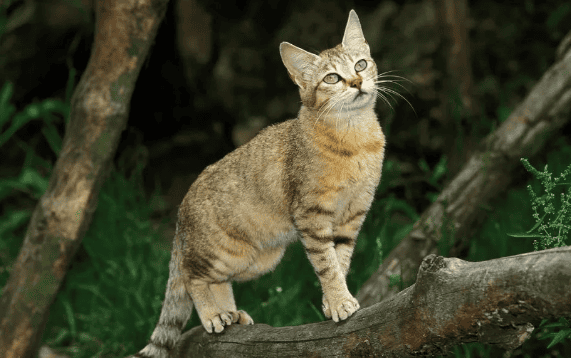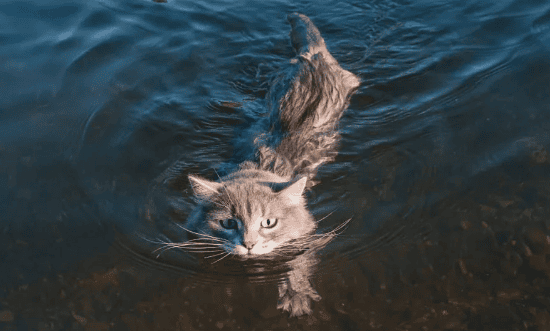Summer is here, and you want to give your cat a good bath, but the situation eventually gets out of hand as expected. When cats are stressed, so are you.

You just want your cat to be soft and smell good, so why does your owner howl as if you are abusing it? Can cats really not be bathed? Why is bathing so scary for them?
Fear of water is written into DNA
Domestic cats are different from dogs. During the process of domestication, cats have not completely lost their wildness, and their appearance and behavior are very similar to their wild cat ancestors.
If you look back at the evolutionary tree of domestic cats, you will find that cats do not like water. It is actually written in their DNA.
Modern genetic analysis shows that almost all modern domestic cats around the world have DNA that is almost the same as that of the African wildcat (sylvestris lybica). It can be inferred that this nocturnal hunter that inhabits grasslands, deserts or shrubs is the ancestor of domestic cats.
African wildcats live in arid environments and have little access to large bodies of water, so they do not need swimming skills to obtain food.
They can obtain the water necessary for survival from their prey, and use their strong kidneys to ensure that they do not become dehydrated. In addition, large carnivores that appear near water sources have even wiped out their interest in swimming. This kind of insensitivity and even alertness to water has spread to domestic cats.
On the other hand, cats’ fear of water is not only a behavioral preference determined by evolution, but also related to the cat’s furry appearance.
Most cat hair is not waterproof. If you take an animal's hair and observe it under a microscope, you will find that the surface of the hair is covered with layers of scales like tiles.
Generally speaking, the smaller the contact angle between the scale layer and water droplets, the easier it is for the hair to be soaked by water. The scale layer of cat hair has a wavy structure, and the angle between it and the water droplets is often less than 90 degrees. Compared with mink hair, which has a long, finger-like structure, it is not very waterproof.
Once immersed in water, every hair of the cat may become soaked from all directions. Abnormally heavy wet fur not only makes the cat unhappy, but also makes it difficult for the cat to move and make it easy for the cat to lose its balance.
In addition, hair also plays an important role in regulating body temperature for cats.

The good thermal insulation effect of animal hair is actually achieved through the air in the gaps between the hairs. The scale layer increases the gap between the hairs and stores a large amount of air, thereby slowing down the air flow and reducing the speed of heat exchange.
Once the hair is wet, the cat not only loses the insulating air layer, but also continuously loses heat due to the evaporation of water.
The physical feeling of a cat taking a bath may be similar to when you jump into the swimming pool wearing a set of water-friendly sweaters and pants, not only feeling awkward but also shivering from the cold. It's not a pleasant experience by any stretch of the imagination.
So, how do cats keep themselves clean?
Cats licking their fur is actually oiling
First of all, cats’ perception of “cleanliness” is somewhat different from that of humans.
Cats’ sweat glands only grow on the fleshy pads that are not covered by hair. Their bodies do not sweat, only oil. Oil, on the other hand, is not considered “dirty” to cats. On the contrary, oils moisturize the fur, provide good protection, and sometimes even bounce off small raindrops.
Therefore, the daily licking of cats' fur is not to remove oil. On the contrary, it is to stimulate the sebaceous glands and spread the oil evenly on the hair.
In addition to the dust and parasites adhering to their fur, what they need to clean is the odor on their bodies. As ambush hunters, their instinct is to eliminate odors and prevent prey from "smell" the wind and flee.
This requires the use of the tongue, the cat’s own bathing artifact. Anyone who has been licked by a cat will definitely remember the sandpaper-like touch. The surface of a cat's tongue is covered with barb-like protrusions. Like human fingernails, the main component of these protrusions is keratin.
Under the microscope, the hook-like protrusions show an arc-shaped structure like a shoehorn. Its functions include combing, cleaning and massaging, which is very efficient.
The direction of these protrusions is not fixed. When the cat's tongue encounters a knotted hair ball, the protrusions will rotate deep into the hair ball and eventually loosen it.
And by rotating, the flexible protrusions not only clean your cat's longer, sparser outer coat, but also reach their skin and the shorter, down-like undercoat near the skin.
In addition, the curved structure also allows these protrusions to use surface tension to absorb saliva and apply it to the cat's body as a natural shower gel. In a day, a cat's tongue can transfer 48 ml of saliva to its fur.
That is, every ten days, your cat will use up as much saliva as a bottle of ordinary mineral water to bathe itself.
When you give your cat a bath, you not only wash away the oil that he has worked so hard to save, but you may also let him be contaminated with odors that you find fragrant and that he finds pungent. From the cat's perspective, your troubles are increasing its cleaning workload.
Don’t wash your cat unless you have to
In the huge cat family, there are exceptions. Some breeds of cats, such as the little leopard-like Bengal cat, are as motionless as a mountain when taking a bath, and play in the water like a water monkey. Anyone who sees it will exclaim, fearing that it is not just a fake cat.
In addition, there are certain individual differences between cats, just like people who are instinctively afraid of heights, but some people are still keen on bungee jumping. Some cats are not afraid of water, but they can still live in harmony with water calmly and calmly.
Most of these brave cats have been exposed to life surrounded by water since they were young. If the cat is exposed to water as a kitten, the cat's ability to accept water will always be stronger than if it is exposed to water as an adult. They thus adapt well to the feeling of being enveloped in clear liquid.

 扫一扫微信交流
扫一扫微信交流
发布评论